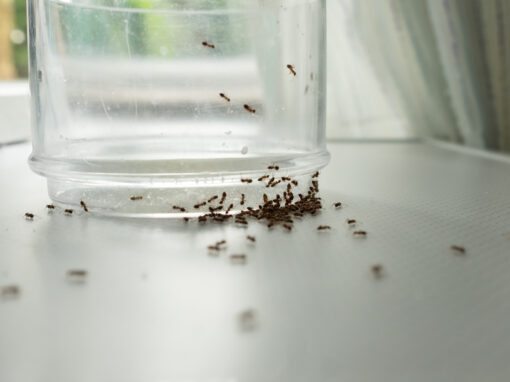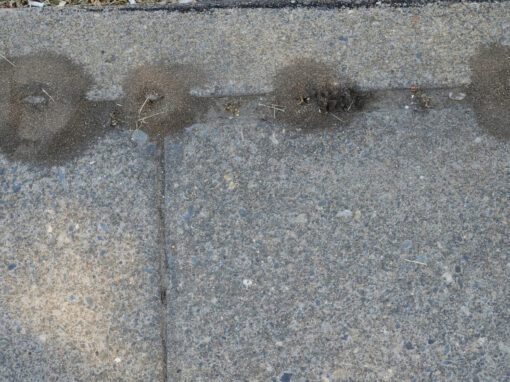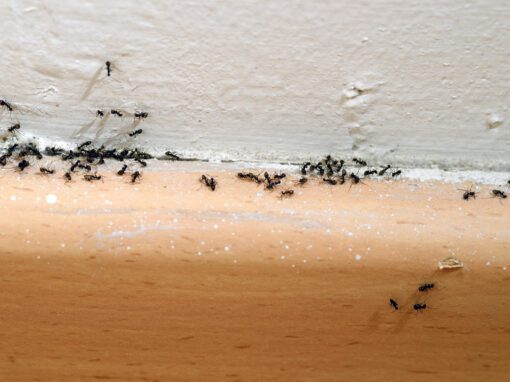Are you asking yourself “Why do I have ants”? You’re definitely not alone. Ants are among the most prolific nuisance pests in the world, with about 15,700 different species. They might seem like simple insects at first glance, but dig a little deeper, and you’ll find that their lives are anything but ordinary. The United States is home to 812 species, while Illinois has 98, or about 12% of our nation’s total. These pint-sized powerhouses are more than just picnic invaders; they’re master architects, fearless warriors, and nature’s ultimate team players. They enter our homes because we offer them favorable living quarters and a never-ending food source, without collecting a single dollar for room and board!
Why do I have ants?
Finding ants marching through your kitchen or scurrying along your windowsill can be a bit of a surprise, especially here in the Midwest, where our seasonal changes drive these tiny explorers indoors. Ants, driven by their social instincts, enter our homes on a search for food, water, and shelter. They use scent trails to communicate, so when one ant discovers a food source, it leaves a trail for others to follow, turning your home into an ant parade route. Despite their small size, these invaders are incredibly resourceful and persistent, seizing every opportunity to thrive.
Beyond their quest for food, ants actively search for water sources. They need moisture to survive, and a small leak under your sink or condensation around your windows can serve as a perfect oasis for a thirsty ant colony. Seasonal changes in the Midwest, from heavy rains to dry spells, push ants indoors as they look for more stable conditions. When extreme weather conditions hit outside, our homes provide a refuge with their consistent temperatures and abundant resources.
What are the 4 most common ant species?
Pavement Ants
When you spot small mounds of dirt and sand between your sidewalk slabs, in cracks on your patio, or alongside your driveway, you’re likely dealing with pavement ants. Indoors, they nest in wall voids, insulation, and under floors. While pavement ants don’t typically cause structural damage or spread disease, their presence in our homes is largely due to us! They feed on almost anything we eat, with a particular fondness for meats and greases. Outdoors, they enjoy honeydew, seeds, plant sap, and other insects. Extreme temperatures, whether excessively hot or cold, drive them indoors in search of shelter and food, and heavy rain can also push them inside.
To manage these ants, the most efficient methods are exterior treatments. Applying a barrier treatment around the foundation to prevents them from entering while directly treating the mounds can also help control the infestation. For interior treatment, using bait gels, allows ants to carry the bait back to their nestmates for more effective eradication.
Odorous House Ants (OHA)
OHAs and pavement ants are similar in color and size, both about 1/8 inch long and dark brown to black. However, you can easily distinguish them by their unique odor when crushed. Crushing OHAs between your fingers releases a smell often described as “rotten coconut.” Originally, OHAs preferred the void spaces in trees and stumps, but as homes were built, they adapted to living in wall voids and under items like pavers, logs, and decorative rail ties.
OHAs favor sweets but will also feed on high-protein and greasy foods like meats and cheese. They don’t pose a danger to people or damage structures. However, because their populations can be large, they may forage throughout your property, including inside your home. Avoid using repellent pesticides indoors; instead, use bait gels and boric acid treatments in wall voids. For exterior control, apply a barrier treatment around the foundation and treat any identified ingress points directly.
Carpenter Ants
Carpenter ants are widespread across the United States and are easily recognized by their large black size. They typically prefer nesting outdoors in decaying trees and stumps. However, indoors, they settle in water-damaged wood caused by roof leaks, overflowing tubs and toilets, or flooding. Carpenter ants can forage up to 300 feet for food, so spotting them inside your home doesn’t automatically mean you have an infestation. They might simply be foragers traveling from as far away as the length of a football field. Their favorite foods include honeydew, plant juices, and fruit juices.
Although carpenter ants don’t spread diseases, they can damage structures by excavating decaying wood to create their galleries for traveling and nesting. They don’t actually eat the wood. Over time, their continuous excavation can weaken the structure of your home. As carpenter ants clean their galleries, they remove wood, sawdust, and other insect parts, dropping them outside the nest entry point. Spotting wood shavings can help you quickly distinguish carpenter ants from termites.
The indoor treatment of carpenter ants will consist of using an insecticidal dust in the infested void area and a bait gel treatment in areas where the ants have been seen to forage. Multiple treatments may be necessary. For the exterior, a barrier treatment around the foundation prevents ants from entering. Also, an extended inspection and possible treatment are needed around the property to check for any satellite nests that could be fueling the invasion. Water-damaged wood should be removed from the structure and replaced. If the decaying wood is left, future carpenter ants may find it just as inviting as the previous colony. It is important to remove and replace water-damaged wood in the structure, as leaving it could attract future carpenter ants.
Pharaoh Ants
The treatment for Pharaoh ants on the interior should be bait gels only! Exterior treatment is usually not necessary, but can be done with a barrier treatment around the foundation. Pharaoh ants in multi-unit living spaces create difficult issues when it comes to control. In multi-unit buildings, controlling Pharaoh ants becomes more challenging. Using over-the-counter treatments can cause the ants to split their nest into smaller ones and spread to other areas. For effective control in multi-unit buildings, you must treat the entire structure.
How Do We Eliminate Them?
Dealing with ants can be a bit of a challenge, but with some persistence and the right approach, you can send them packing. By identifying the source, cleaning up, removing moisture, and of course seeking professional help, you can take back control of your home and send those unwelcome guests packing. So next time you spot them, remember: they’re just following their instincts, trying to make a living just like we do!





